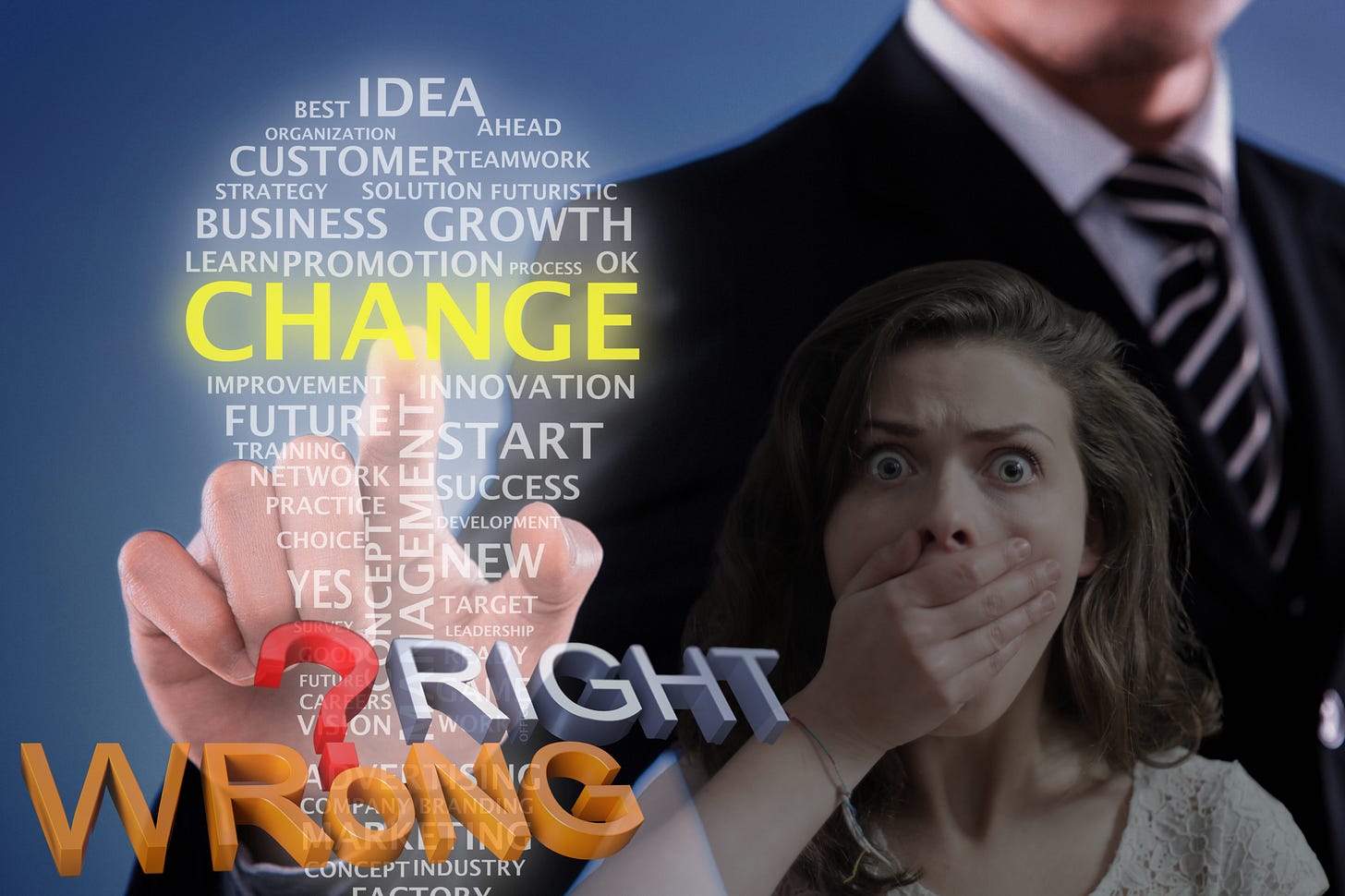How Can No One Ever Be Wrong?
How Toxic Thinking Undermines Teams and Organizational Cultures
How do you and the people in your organization respond when something goes wrong? Do you point fingers or try to hide? Do people get defensive or deny their connection?
Is there a looming silence when mistakes are brought up? Do people quietly withdraw or avoid? These are all signs that the culture is being influenced by the toxic thinking “it’s wrong to be wrong” meaning being wrong is unacceptable.
The problem that arises when no one feels safe enough to be wrong is that no one then can truly feel safe to be honest.
I have worked with a leadership team in a healthcare setting that was facing low morale and high turnover. After listening to staff in sessions, the pattern that became very apparent to me was that people were afraid to speak up about anything they thought was wrong, whether they were responsible or not. This was based in fear as their culture had been shaped by perfectionism and hierarchy. People were afraid that a single misstep could cost someone their job or their credibility. For example, a staff member shared that “Even when I know a process is not working, I do not say anything. It is just easier to stay quiet than to be seen as responsible for the situation, difficult, or disloyal.”
Please don’t mistake this as an emotional issue. It is clearly a systemic one which impedes the growth of the organization itself, and the people involved. Everyone needs to feel like it’s ok to be wrong sometimes, no matter what our roles. This is not about lowering standards. It is about elevating courage, credibility, and growth. It is about embracing and enacting the willingness to do better and acknowledging that things need to change that no longer serve a purpose.
It can be simple to acknowledge and accept being wrong. It does not have to involve over-explaining or finger-pointing.
Ditching the toxic thinking of never being wrong for an openness and willingness to learn and do different can transform culture and spark innovation for organizations.
When we humanize our workplaces, we stop treating mistakes as threats and start treating them as learning opportunities. We make it possible for teams to experiment, iterate, and evolve. And we create the psychological safety that research shows is the most important ingredient for innovation, collaboration, and well-being.
Here are some ways we can shift the culture:
Replace blame with reflection. Prioritize asking “What happened, and what can we learn from it?” rather than “Who did it?”
Language matters. Leaders set the tone. Saying “Let us revisit this together” creates more safety than “This needs to be fixed now.” Words create psychological safety.
Create re-entry points. If someone leaves a project, makes a mistake, or steps away in frustration, give them space to return with dignity. Support growth opportunities and discourage punitive actions.
Celebrate course corrections. Celebrate when someone speaks up and a decision is changed as a result for the better. This reinforces that speaking up is valued and leads to better outcomes, without fearing repercussions.
Thriving organizations do not seek perfection. They humanize the workplace to facilitate better working teams and systems that encourage honesty without judgement and fear. When admitting something or someone is wrong it is NOT an act of bravery but is part of the cultural norm.



